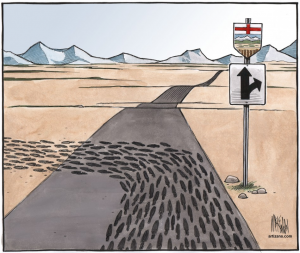- Written by CAEPLA
Brad and Karen Davis own and operate a sheep farm in Eastern Ontario. Following is their personal story of their experience with pipelines, dealing with pipeline company land agents and the effects of the National Energy Board (NEB) Act.
We purchased our farm in September 2012 knowing there were pipelines running through the farm, but not having any knowledge of what exactly that meant to us. Our farm is 400 acres with the pipelines splitting the farm into north and south halves. We operate a pasture based sheep farm where all 400 acres are used for rotational grazing.
![]()
